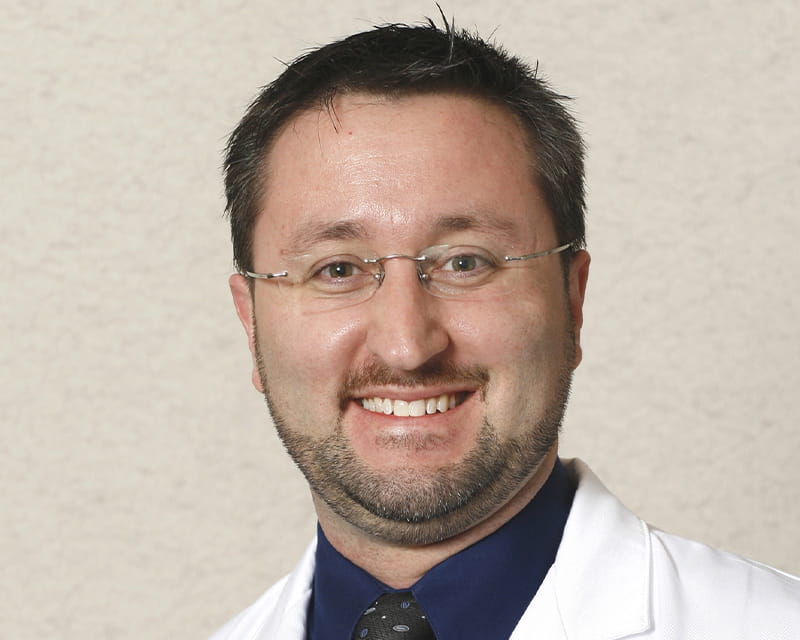
Research incorporates patient preferences in prostate cancer active surveillance protocols
 For most people, cancer recurrence brings back former fears and anxieties while triggering new worries about repeat treatments, challenging side effects and the odds of survival. But thanks to a multidisciplinary, minimally invasive surgical approach available at The Ohio State University Wexner Medical Center and The Ohio State University Comprehensive Cancer Center – Arthur G. James Cancer Hospital and Richard J. Solove Research Institute (OSUCCC – James), a cure is within reach for certain patients—and it may come with reduced postoperative pain, fewer complications and shorter recovery.
For most people, cancer recurrence brings back former fears and anxieties while triggering new worries about repeat treatments, challenging side effects and the odds of survival. But thanks to a multidisciplinary, minimally invasive surgical approach available at The Ohio State University Wexner Medical Center and The Ohio State University Comprehensive Cancer Center – Arthur G. James Cancer Hospital and Richard J. Solove Research Institute (OSUCCC – James), a cure is within reach for certain patients—and it may come with reduced postoperative pain, fewer complications and shorter recovery.
Although advanced treatments such as targeted therapies and immunotherapies have dramatically changed the landscape of oncology care, some cancers—including bladder, prostate, colorectal and gynecological cancers—have relatively high rates of relapse. In cases of local and sometimes regional recurrence, patients may require surgery.
“Even after undergoing salvage chemotherapy or radiation therapy, many patients with recurrence still have residual disease, and at that point, controlling or curing the cancer can only be accomplished with surgical resection,” says Ahmad Shabsigh, MD, urologic oncologist and associate professor in the Department of Urology.
Dr. Shabsigh, who is also associate director of perioperative quality at The OSUCCC-James, says that until recently, these complex surgical resections were largely performed using open techniques. Although these procedures can increase patient survival, they often require blood transfusion, lengthy hospital stays and substantial recovery time.
“At Ohio State, we provide a range of surgical approaches to manage recurrent cancer, including minimally invasive strategies that greatly reduce the risks of traditional surgery,” Dr. Shabsigh says. “We bring together accomplished surgical specialists from multiple fields to tackle these challenging problems—and now more than ever, we rely on robotic-assisted surgery combined with intraoperative radiation therapy (IORT).”
Ohio State is no stranger to surgical innovation; its robotic surgery program is one of the most comprehensive in the country. Its physicians help develop and refine robotic techniques, train surgical residents and fellows, and coach visiting surgeons and staff who want to build robotic surgery programs at their own institutions.
To that end, Dr. Shabsigh and his colleagues are among a handful of surgeons performing complex robotic surgeries for primary cancer and cancer recurrence. Not only did he perform central Ohio’s first robotic radical cystectomy with intracorporeal urinary diversion, but he also helped develop robotic abdominoperineal resection techniques for rectal cancer. And in May 2020, he described his early experience performing robotic metastatectomy with extraction incision and natural orifice intraoperative radiation therapy in the Journal of Urology.
The team’s areas of expertise also include:
“We perform roughly 50 robotic resections with IORT for cancer recurrence every year, which is quite a high volume considering it’s such a niche population,” Dr. Shabsigh says. “It’s an ideal option for eligible patients because we’re using such small incisions and we can more easily navigate narrow passageways. Also, IORT allows us to deliver extremely high doses of radiation to the surgical field with minimal damage to surrounding healthy tissues.”
Dr. Shabsigh adds that, following these procedures, many patients are discharged to home after one or two days.
Although the safety and efficacy of robotic resections in the setting of cancer recurrence is understudied, Dr. Shabsigh hopes to change that. As part of his ongoing clinical and translational research efforts, he and his colleagues collect and closely follow long-term surgical outcomes, including quality of life measurements. He will soon report Ohio State’s data comparing outcomes of robotic versus traditional surgery for patients with recurrent rectal cancer.
“Today patients are surviving cancer at higher rates than ever before, thanks to remarkable new treatments driven by clinical trials,” Dr. Shabsigh says. “Hopefully, over time, survivors will also see lower rates of recurrence. But I think there will always be a percentage of people who don’t respond to medical treatments, and for that reason, there will always be a role for surgical excision. Achieving successful cancer outcomes with safe surgery is our highest priority.”